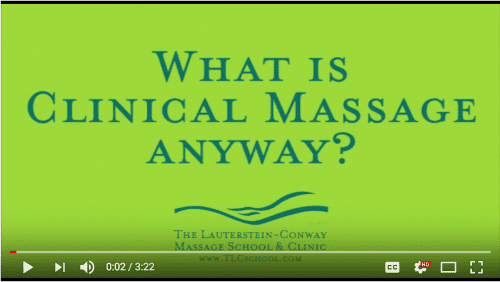We hear the terms “medical massage,” “clinical massage” and “orthopedic massage therapy” used in our field these days. But what is Clinical Massage really?
Clinical massage therapy uniquely focuses on the treatment of soft tissue to maintain, develop, augment or rehabilitate the patient’s physical function. Clinical massage therapy can improve the functioning of joints and muscles, the healing process, metabolism and circulation.*
Some people think that it is massage that primarily addresses physical complaints of the muscles and connective tissues. Others think it is also important to address the nervous system. Still others look at the contributions of the mind and emotions.
It has been an assumption in our school that the best result in massage comes from the skill to address the whole person – not just the body, mind or emotions.
On the one hand, Clinical Massage certainly requires a deep familiarity with anatomy, kinesiology and the physiology of how tissue gets injured and how to facilitate its healing. It requires deeper techniques – cross-fiber, deep effleurage, trigger point work, muscle energy techniques, etc. – to address anatomically based tension and pain.
On the other hand, probably as much pain results from the client’s psychology and the chronic postures he/she adopts in response to it.
What is Clinical Massage Anyway?
Every deep belief about oneself manifests in one’s body. A lack of self-esteem will affect one’s breathing and therefore every cell.
For example, person with an exaggerated sense of duty will stand and move with more rigidity than truly serves them. And a person who grew tall early may slump over because he/she was embarrassed about it. So recognizing the importance of these issues may be as important in clinical work as dealing with fascial adhesions.
As Dr. John Sarno, MD said science is empirical – it works with what is. Human beings are body, mind and emotion. Therefore, a medical approach that ignores emotion or mind is simply bad science.
A scientific approach to manual therapy that takes the mind and emotions as well as the tissues into account is a lot more likely to have the optimum clinical result.
What a relief to see hands-on therapy leading medicine on the road to understanding and treating the whole person!
Join us the next in a series of Clinical Massage continuing education workshops. Check the upcoming workshop dates here now.
This article was updated on July 12, 2018.


